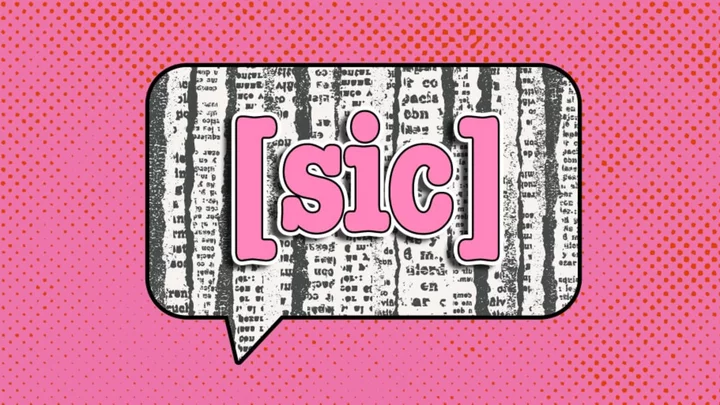You’re perusing a news article when there, right in the middle of a quote, is the word sic encased in brackets. Since this is far from the first article you’ve ever read, maybe you already know what sic signifies: that the word or phrase directly preceding it hasn’t been altered from the original quote—even though it might be misspelled or simply a strange word choice.
But why sic? The shortest possible answer to that question is this: Because Latin.
What does sic actually mean?
Like e.g. (or exempli gratia), mea culpa, and countless other terms, sic is just another word we’ve borrowed from the supposedly dead language. It literally means “thus” or “so,” as in sic semper tyrannis, “thus ever to tyrants.” But that hasn’t stopped people from coming up with a slew of “backronyms” that describe it in slightly more detail: “spelling is correct,” “said in copy,” “said in context,” etc.
Though sic isn’t a new device, English writers only started using it around the late 19th century, according to the Oxford English Dictionary.
How to Use Sic Correctly
Sic is often inside brackets or parentheses and may or may not be italicized. As for when you might want to use it, there are a couple different scenarios. One is when a quote features a typo, a misspelling, or a grammatical error. Once you’ve dropped sic to call attention to the error the first time, you don’t have to include it if the same error appears in a later quote from the same source.
Sic can also come in handy if you’re writing something that the reader might accidentally interpret as a mistake. Merriam-Webster cites the comic book Funny Aminals as an example: The misspelling of animals is intentional, but someone unfamiliar with it could easily just think you, the writer, made a typo.
Convenient as sic may seem in theory, some consider it a problematic device. As the Columbia Journalism Review’s Merrill Perlman put it in 2014, sic “can come off as snarky, giving a sense of ‘we know better,’ at the expense of the original author.”
Some outlets recommend using it sparingly or not at all. In 2019, the Associated Press Stylebook announced that it would henceforth retire sic for good.
“Most people don’t speak, off the cuff, in grammatically perfect sentences,” the Stylebook tweeted. “Using quotes that aren’t necessary, or calling attention to missteps with a (sic) that readers don’t understand anyway, serves no one.” Instead, their experts recommend simply paraphrasing a quote if that’s the best method “to convey information in the clearest way possible.”
If the quote contains a grammar or spelling error (typos included), you can also use brackets to fix it directly. For example, if a source says “Using sic make the writer seem insufferably smug,” you could update “make” to “make[s]” without employing sic and proving your source’s point.
“Making a correction in square brackets … is somewhat less aggressive than deploying a sic,” The Chicago Manual of Style Online explains. “A rule of thumb is to silently correct typos … unless your judgment tells you either to be transparent or not to meddle.”
A version of this story ran in 2022; it has been updated for 2023.
This article was originally published on www.mentalfloss.com as What ‘Sic’ Means—And How To Use It Correctly.









